Social media is an ever-changing sphere, and it’s hard to keep on top of the latest updates (you can trust me on this one). That is where we come in to help. We’ve been keeping our ear to the ground throughout May to keep you posted on any noteworthy social media updates across various platforms.
TikTok
TikTok has launched a new, interactive insights platform, which enables you to use a range of filters to discover key data points on your target audience.
It is a great way to learn your audiences’ behaviours and how they interact with different content. This will be particularly useful when creating new campaigns it will make the process more streamline as this will give businesses a definitive insight into who they should be targeting.
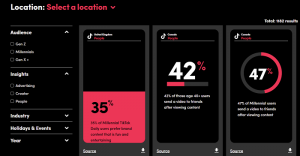
As you can see in this example, there’s a range of data filtering tools to choose from, including location, demographics, industry vertical, date, etc.
What does this mean for brands?
The info could help to guide your strategic approach and inform your choices. The only drawback right now is that TikTok’s insights database doesn’t seem too deep, so many of the same data points show up in several categories, which means they may not be as specific as you might like.
But still, the data presented does relate to each element, and does provide more perspective on what’s happening in the app.
You can now manage TikTok campaigns through third-party platforms
Staying with TikTok, they have announced this month that they’re collaborating with third-party platforms to allow users to manage and schedule their TikTok content from a content management platform. Wooo!! These platforms include, Brandwatch, Dash Hudson, Emplifi, Hootsuite, Khoros, Later, Sprinklr, and Sprout Social.
TikTok announced the news, stating that they “have built innovative solutions that make it easier for brands to publish, manage, and track their content on TikTok, all within the content management tools that brands already use and love. We are excited to connect brands with these trusted partners who can help them lean into and level up their TikTok-first content strategies.”
This latest update will make it much easier to plan and post your TikTok content, while also simplifying the repurposing process, so you can re-share your video assets across each platform.
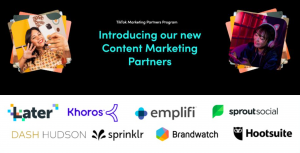
What does this mean for brands?
It makes it much easier to manage your TikTok content, especially if you already use third-party tools to plan your social content. Using a scheduling tool will mean that you are consistently engaging with your TikTok audience. It also ensures that you are able to plan official announcements or important branded content ahead of time.
Instagram has launched an initial test of a new, full-screen variation of its main feed display, which makes Instagram content look a lot more like TikTok, leaning into the latest usage trends. They have already said that they’re working to align its content feed around Reels, given the popularity of the format. The new home feed sees photo and video posts integrated with Reels and Stories’ full screen vertical format. Feed videos also feature a new progress bar. Stories remain accessible at the top of the feed as usual, but users can also view them by tapping profile rings on feed posts. How do we feel about this change?
What does this mean for brands?
Full-screen immersive feeds are also what users are accustomed to thanks to the success of TikTok. What does this mean for content creators and particularly how brands should change their content strategy to combat this change. When creating new campaigns, you’ll need to keep this new format in mind when speaking with clients and going forward when rolling out creative.
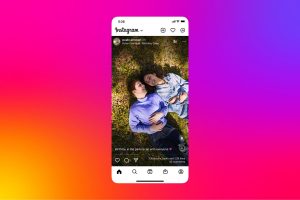
Snapchat
Snapchat unveiled a new partnership with celebrity video creation platform Cameo, which will enable Snap advertisers to pay Cameo members to create short video ads for their Snap marketing efforts. Called the ‘Snap x Cameo Advertiser Program’, the process essentially simplifies celebrity endorsements, it allows advertisers to directly get in touch with Cameo’s 45,000 celebrities for their ads. Check out their page here
The celebrities will, of course, have the option not to accept any proposal. They will also only work with brands that align with their own personal brand. You wouldn’t want Greg Wallace promoting any hair products! But again, the right celebrity, paired with the right message, could be big, and will undoubtedly attract a lot of interest. At present it is only available to Snapchat advertisers in the US.
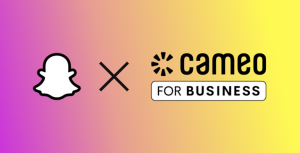
What this means for brands
Celebrity endorsements have a much higher chance of going viral and partnering with just the right person for your brand could explode your marketing efforts overnight. For context, Cameo generated $125 million in revenue last year, underlining the popularity of the format, while Snapchat is now up to 332 million daily active users. It’s a huge opportunity for brands considering the increasing popularity of influencer marketing. If you bag a celebrity for a collaboration, it will be sure to get people talking!
YouTube
Our final update for this month will be from YouTube, who have announced a weekly frequency capping for video ad campaigns. This new feature will allow marketers to limit the number of times a single user sees their promotion in any given week. This is an important feature, because as a social media user you do not want to be getting served the same ad again, and again. And as an advertiser you don’t want people getting fed up or annoyed constantly seeing ads plastered across social media. Here is what YouTube had to say on the update, “Now, you can compliment your reach by actively setting your weekly frequency goal – a solution only YouTube can provide. Combining our unmatched audience reach and leading machine learning capabilities, advertisers will now be able to optimize how many times viewers see their ads in a week. Not only does this mean more efficient spend, but crucially, a better experience for viewers.”
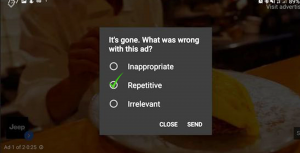
What this means for brands
It might seem counterintuitive, but ads can hold more staying power when served less often. They’ll also be more likely to view your brand positively if their ad experience isn’t as disruptive. YouTube reported that there was twice the awareness lift, at a similar cost, compared to past ads that have ran without the frequency-optimised feature. As the saying goes, less is more!


